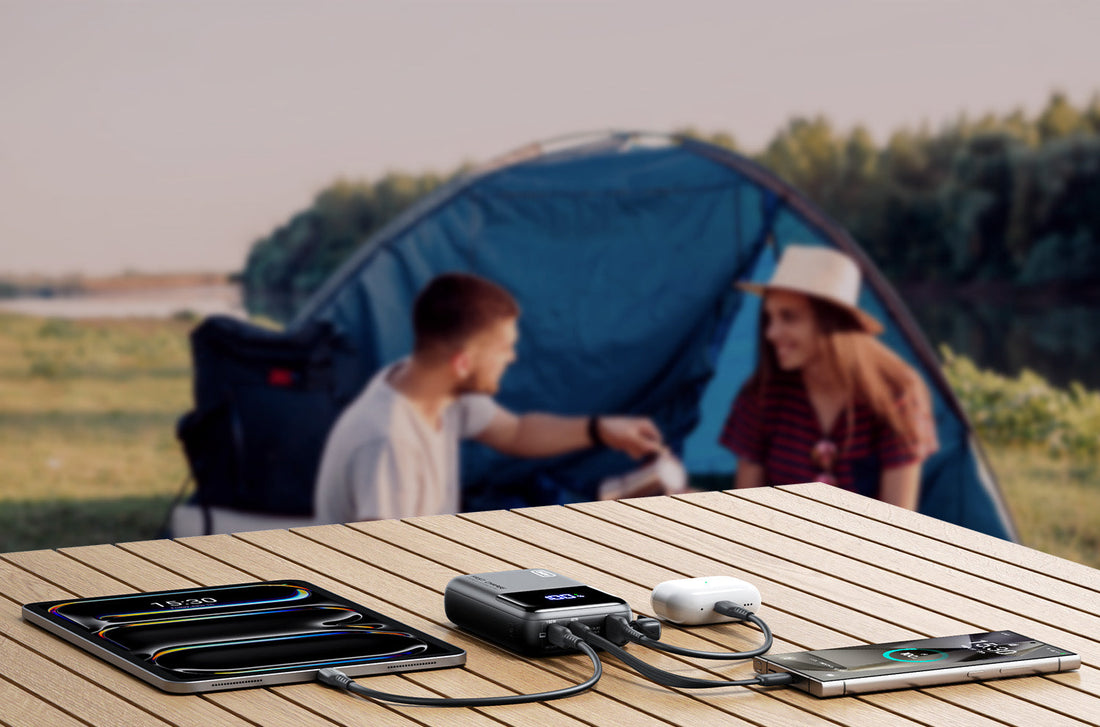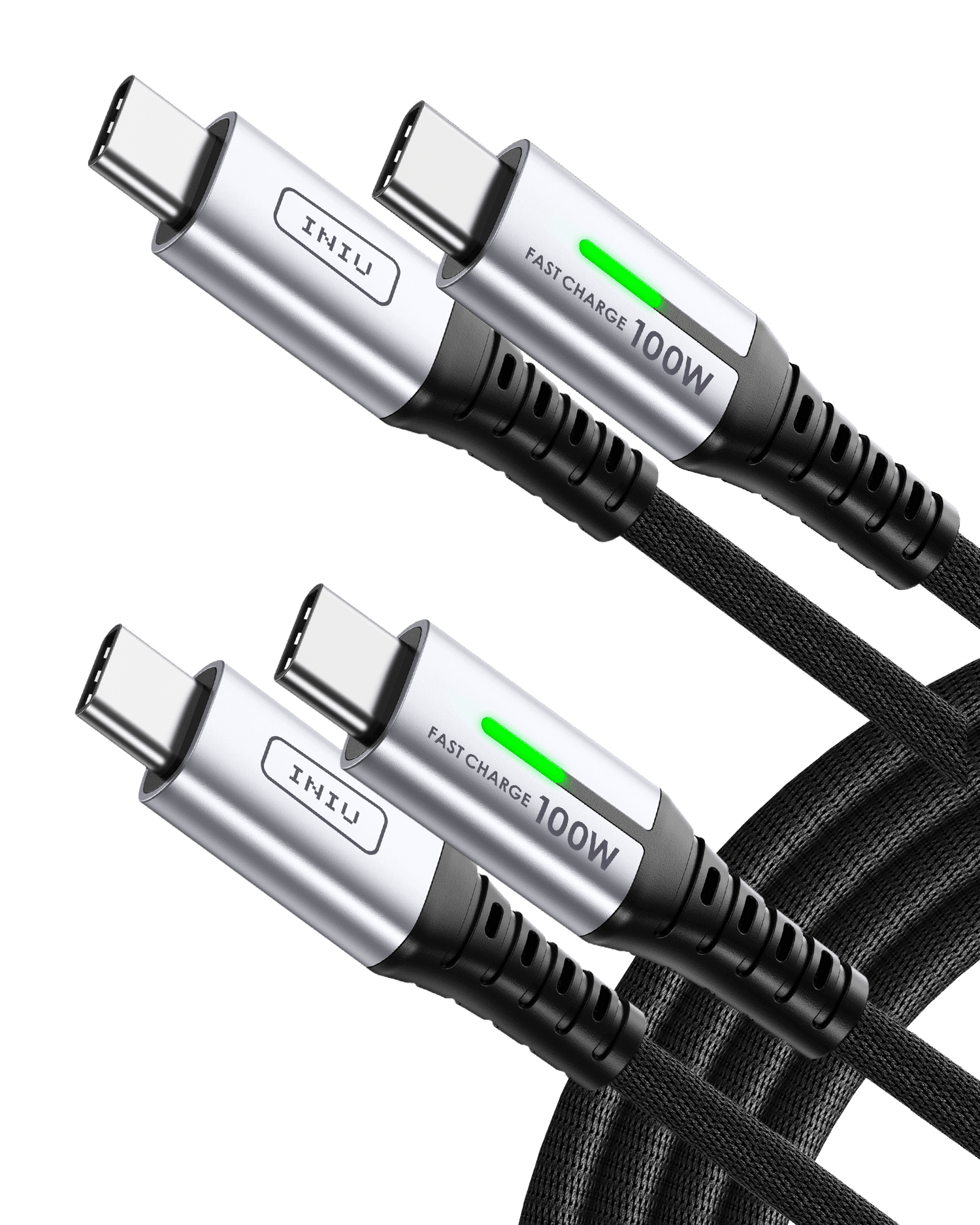
Guía del puerto USB: Comprender las diferencias en velocidad, forma y potencia
En una época donde estar conectado es tan importante como tener energía, el humilde puerto USB juega un papel mucho más importante de lo que la mayoría creemos. Ya sea que estés cargando tu teléfono, tableta o portátil, el tipo de puerto USB en su banco de energía puede afectar dramáticamente su velocidad de carga, compatibilidad e incluso conveniencia.
Con las tendencias de búsqueda de "USB-C vs USB-A" y "carga rápida"en aumento, es el momento perfecto para descifrar lo que significan estos términos y Cómo elegir el banco de energía con alimentación USB adecuado Puede hacer tu vida mucho más fácil.
Una guía rápida sobre los puertos USB: más que solo formas
La mayoría de la gente está familiarizada con el clásico puerto USB-A rectangular; existe desde hace décadas. Pero los dispositivos más nuevos se están inclinando cada vez más hacia el USB-C, una alternativa más pequeña, reversible y mucho más potente. También existen el Micro-USB y el Lightning, pero para las baterías externas, los dos más relevantes son el USB-A y el USB-C. Entonces, ¿cómo distinguirlos?
- USB-A:Más grande, rectangular, no reversible.
- USB-C:Más pequeño, de forma ovalada y se puede enchufar de cualquier manera.
Esta distinción visual es solo el comienzo. Las diferencias son mucho más profundas, especialmente en cuanto a potencia y velocidad.

USB-A vs USB-C: ¿Cuál es la diferencia real?
Si bien el USB-A ha sido el estándar durante años, está siendo rápidamente superado por el USB-C por varias razones:
- VelocidadUSB-C permite una transferencia de datos y energía mucho más rápida. Algunos puertos USB-C pueden suministrar hasta 100 W, lo que permite... Carga rápida incluso para portátiles.
- Versatilidad:USB-C maneja datos, video y energía, todo en un solo puerto.
- A prueba de futuroCada vez más dispositivos utilizan exclusivamente USB-C, incluidos teléfonos inteligentes, tabletas, drones, cámaras y consolas de juegos.
Por eso muchos bancos de energía modernos, incluido nuestro INIU Puma P63-E1 100W y más modelos, vienen equipados con múltiples puertos USB-C para manejar una amplia gama de escenarios de carga.
¿Es USB-C realmente más rápido que USB-A?
Sí—El USB-C no solo es más rápido, sino también más inteligente. La razón principal reside en la tecnología que lo respalda, especialmente al combinarlo con Entrega de potencia (PD) o Carga Rápida (QC) Protocolos. Los puertos USB-A, incluso en sus versiones mejoradas como USB 3.0, suelen alcanzar su máximo con niveles de potencia bajos, típicamente de 12 W a 18 W. Esto es suficiente para la carga básica de teléfonos, pero presenta dificultades con tabletas o portátiles. En cambio, el USB-C con PD puede ofrecer hasta 100 W de potencia, lo que lo hace ideal para todo tipo de dispositivos, desde smartphones hasta portátiles. Por ejemplo:
- Cargar un teléfono inteligente:
USB-A:~2,0 A x 5 V = 10 W
Cargador USB-C:~3,0 A x 9 V o 20 V = 27 W–60 W+
- Cargar una computadora portátil como MacBook Air:
USB-A: No compatible
Cargador USB-C:Totalmente compatible
Esto significa que el USB-C no solo carga más rápido, sino que también permite cargar dispositivos más grandes que el USB-A simplemente no puede soportar.
Es por eso que los bancos de energía premium como INIUP50 de 45 W, o 100W P63-E1 Todos están diseñados con USB-C PD. Estos modelos permiten cargar un teléfono al 70 % en menos de 30 minutos, o incluso una computadora portátil en cualquier lugar.
¿Qué dispositivos utilizan USB-C para cargarse?
El USB-C se ha convertido en el estándar universal para la mayoría de los dispositivos electrónicos modernos gracias a su potencia, velocidad y simplicidad. Su adopción es generalizada en todas las marcas y categorías de productos:
| teléfonos inteligentes |
|
| Portátiles y tabletas |
|
| Otros dispositivos |
|
¿Qué dispositivos todavía utilizan USB-A para cargarse?
Aunque el USB-C es el futuro, el USB-A sigue siendo importante, especialmente para usuarios con dispositivos o accesorios más antiguos. Muchos productos del mercado, incluso los nuevos, aún incluyen puertos o cables USB-A.
Los dispositivos USB-A comunes incluyen:
- Teléfonos Android más antiguos (con cables Micro-USB)
- Ratones y teclados inalámbricos
- Relojes inteligentes y pulseras de actividad
- Cables de recarga para bancos de energía
- Ventiladores portátiles, minilámparas y otros dispositivos USB de bajo consumo
- Altavoces Bluetooth y lectores electrónicos más antiguos
Consejos de compra: Cómo elegir el banco de energía con puerto USB adecuado
Al comprar un banco de energía, no se limite a mirar capacidad de la bateríay—mira los puertos:
- Elija la salida USB-C si desea una carga rápida
- Busque compatibilidad con PD (entrega de potencia) para lograr la máxima eficiencia
- Asegúrate de que admita carga de dos puertos (USB-A + USB-C) si tienes dispositivos nuevos y antiguos.
- Tenga en cuenta la compatibilidad del cable: un cable USB-C a USB-C es ideal para los usuarios modernos
En un mundo acelerado, su equipo de carga debe seguir el ritmo de su estilo de vida. Comprensión de USB-A y USB-C-y elegir un banco de energía Que admita las últimas tecnologías puede marcar la diferencia.
Ya sea que estés viajando, jugando o simplemente administrando tu vida digital diaria, INIU ofrece una gama de bancos de energía de alto rendimiento y preparados para el futuro, diseñados para cargarse más rápido, durar más y cabe perfectamente en tu bolsillo.
Preguntas frecuentes sobre el puerto USB
P1: ¿Por qué es importante elegir el tipo de puerto USB correcto para un banco de energía?
A1: Seleccionar el tipo de puerto USB correcto (como USB-A o USB-C) afecta significativamente la velocidad de carga, la compatibilidad del dispositivo y la comodidad general de la carga. Puertos USB-C, En particular, Admite carga más alta potencia y una gama más amplia de dispositivos.
P2: ¿Cuáles son las diferencias físicas entre los puertos USB-A y USB-C?
A2: USB-A:El puerto clásico, rectangular, no reversible (sólo se puede conectar de una manera).
USB-C:Un puerto más pequeño, de forma ovalada y reversible (se puede conectar en cualquier dirección).
P3. ¿Es USB-C más rápido que USB-A? ¿Cuáles son las principales diferencias?
A3: Sí, USB-C es generalmente mucho más rápido e inteligente que USB-ALa principal diferencia es la velocidad: el USB-C admite una transferencia de energía mucho mayor y, al combinarse con los protocolos Power Delivery (PD) o Quick Charge (QC), puede entregar hasta 100 W de potencia, superando ampliamente al USB-A (que normalmente alcanza un máximo de 12 W a 18 W).
P4: Al comprar un banco de energía, ¿qué debo tener en cuenta además de la batería? Capacity?
A4: Puerto de salida USB-C:Si desea una carga rápida, asegúrese de que el banco de energía tenga una salida USB-C.
Compatibilidad con PD (suministro de potencia):Asegúrese de que el puerto USB-C admita el protocolo PD para lograr la máxima eficiencia y compatibilidad de carga.
Compatibilidad de cables:Asegúrese de tener los cables correctos (por ejemplo, un USB-C a USB-C cable es ideal para usuarios modernos).



